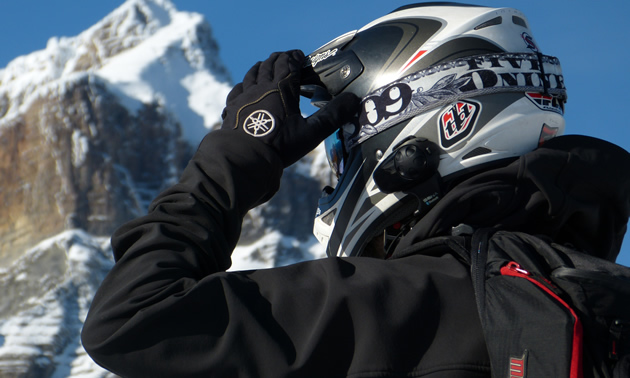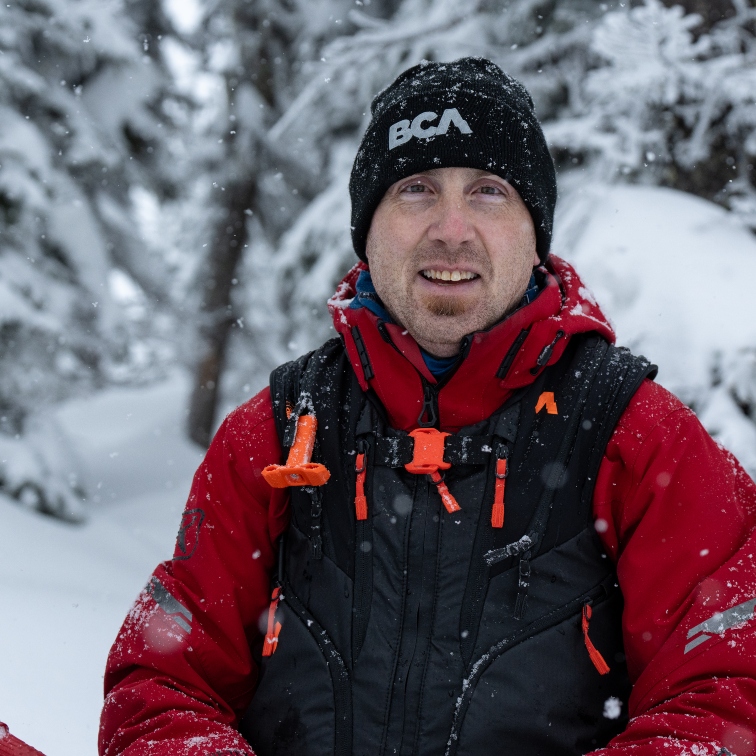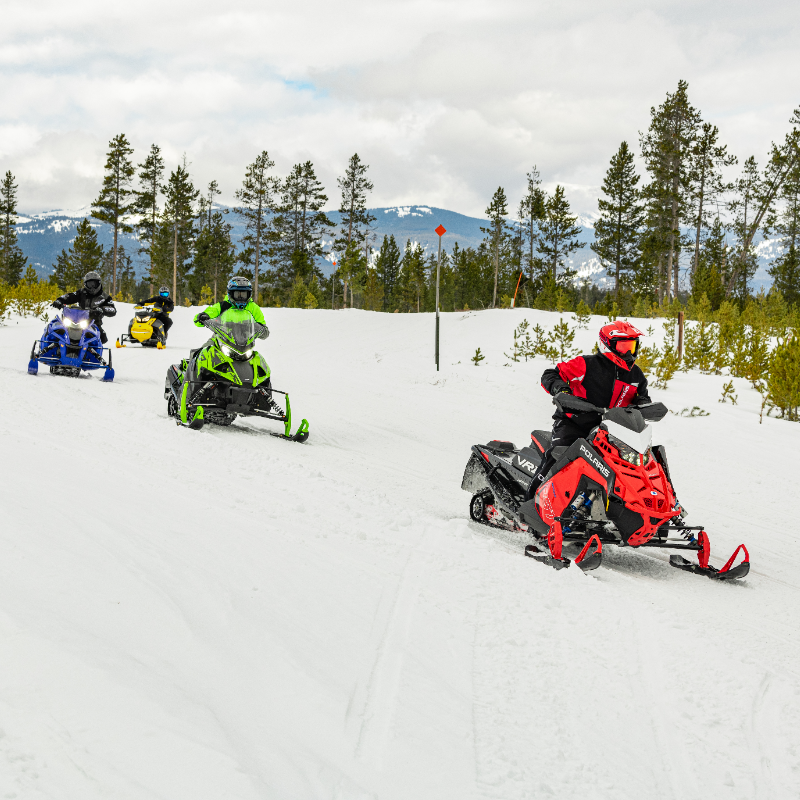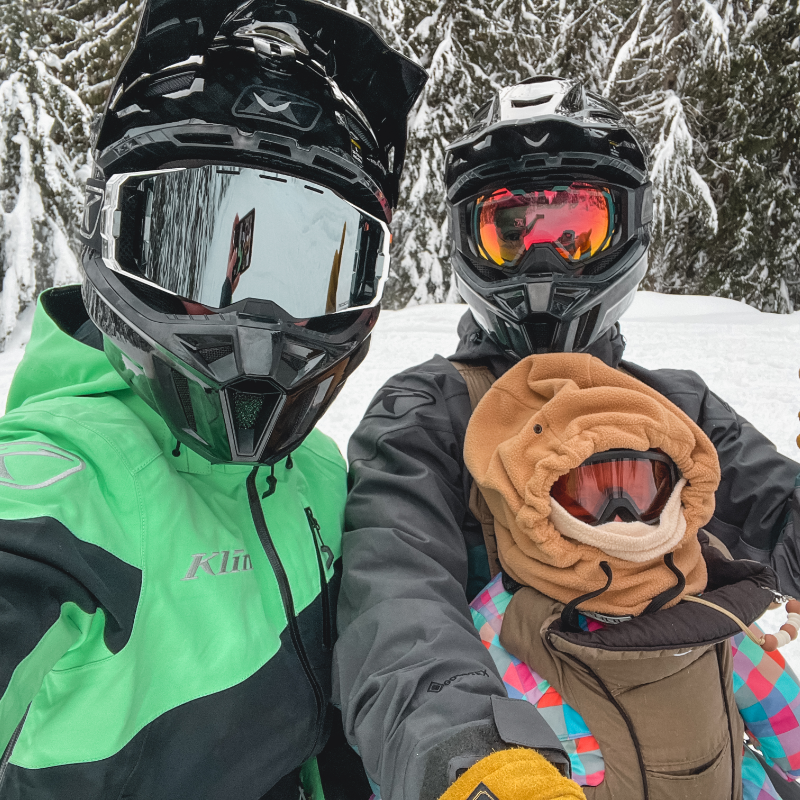The days are shorter, the nights are colder and the anticipation is building. We are getting closer to the days of snow and grin-inducing shredding. Snowmobile season is close at hand, so many of us begin to prepare. This is a wonderful time to dust off the gear and overhaul our backpack and safety equipment.
Here is a list of some essentials to consider when packing for your winter adventures:
Backpack
Inspect zippers, enclosures and the structure of your bag, ensuring everything is working as it should. Remove any frayed threads that could get stuck in zipper teeth. If you have rips or tears, sew or patch them up now, or have a professional repair it. The longer you wait, the bigger the hole will get.
If you have an avalanche bag, it would be a great time to deploy it to make sure everything is working as it should. It’s nice to know the mechanism works, but it’s also great to understand how much pressure is actually needed to deploy the airbag itself. Some refills are more expensive or accessible than others, but you’ll find that many shops have a pre-season special on canister refills. Safety is everyone’s concern.
Tunnel bags
Sometimes that lost piece of beef jerky can hit you like a wall of gross stench when you open up your storage bag. Rotting food, moisture and used gear can sometimes be forgotten and left to bake during the summer. I’ve been there before, and trust me, it is NOT a smell you want to remember.
In the event you have stench radiating from your tunnel bag, here are some helpful tips:
- Start by removing all the gross contents.
- Open up all compartments, sprinkle with baking soda and let sit overnight.
- Fill a sink with warm water and a bit of laundry detergent (the ones with OxiClean in them are awesome) and agitate till you make suds.
- Dip in a sponge or a rag and thoroughly clean your backpack, inside and out. Pay special attention to corners, especially if there was rotting food left inside.
- Hang to dry.
First aid kit
Everyone who rides the backcountry should have a first aid kit on them at all times. I usually have two setups, one on my back, and another in my tunnel pack with a few more additions for the just-in-case times. What are the just-in-case times? Should you become separated from your sled, stranded overnight, injured or a member of your party injured, the contents of your survival kit could mean the difference between life and death.
Bandages, gauze, packing, sling, disinfectant, pain relief and burn salve are all great additions to a first aid kit. You can purchase a first aid kit from your local drugstore or make one yourself. I include Arnica cream in my first aid kit. Arnica is an herbal cream that helps to minimize inflammation and bruising. Chapstick, sunscreen and zinc creams are also great additions. To minimize the amount of space these things take up, look for them in travel-sized containers.
Survival kit
Matches and fire starters are complete life savers if you were to stay in the elements overnight. Paper isn’t sufficient as a fire starter, and relying on gas as your accelerant may not be realistic in the event you become stranded if you run out of gas. Have multiple fire sources, such as a windproof lighter, waterproof matches in a waterproof container and a flint stick. Compressed sawdust fire starters are great, as they burn hot and for a long time, giving your frozen wood time to catch.
You can make your own fire starters by using cardboard egg containers filled with dryer lint and topped with a bit of beeswax. These make a fantastic fire starter. Tampons are also a versatile little tool—you can dip one into your gas tank (providing you have gas) and use it to start a fire.
A saw is not only for the moments you find your ski and A-arm trapped in a maze of foliage; it could be the only way to stay warm and dry in the event of an unexpected overnight encounter. There are several to choose from. I’m in love with my collapsible Stihl saw, which is tough as nails, and not very heavy.
There are hand-operated chainsaws, such as the one found in the Motorfist Aqua Survival Kit. This hand-operated chainsaw cuts through wood with a minimal amount of effort. Compact and lightweight, it makes the perfect survival kit companion.
Research the best ways to make a quick lean-to for survival, for in this situation conserving energy and minimizing sweat are life savers. Your saw will be your saving grace in the event you have to build a temporary shelter.
A signal mirror, whistle and compass are all potential life savers. I have a combination whistle and compass, which again is great for saving weight and space.
Also pack extra socks, gloves, a toque and a space blanket—every little bit of warmth helps. The space bags can be used to radiate heat into a body, or placed inside your lean-to to radiate the warmth of your fire back on your person.
Space blankets and backcountry basics
Les Stroud, you would be proud—I watch and learn from you, Mr. Survivorman. I pack a few space blankets for this purpose. If someone is injured and in shock the space blanket helps to keep them warm. Hot Paws, or other brands of instant warming satchels, are nice to have. Warmth is key to survival.
Backcountry basics will already have you possessing a beacon, shovel and probe and the knowledge to use them. Additions to these essentials would be a Leatherman-type of multi-tool (make sure your knife is sharp), a flashlight, a candle, zip ties, duct tape, tow straps, extra spark plugs, a spare belt and the tool kit your sled came with. Some of the heavier items are usually stored in your tunnel bag, as well as an extra shovel.
I carry two shovels. The one on my back is used in the event of an avalanche rescue situation. Too many times shovels can be lost when digging out a buddy or yourself. The shovel in my tunnel bag is for digging out, digging snow pits and for basic utility use. If you only carry one shovel do NOT keep this shovel on, or worse yet, IN your sled, as this can prevent access when needed most.
Bring toilet paper in a waterproof zip-lock bag as well as granola bars, dehydrated fruit, energy bars and a water/electrolyte-rich drink (in your backpack and in your tunnel bag). Pack your lunch for the day, but always make sure you have extra food in the event you were to be stranded in the wilderness.
Finally, rope—bring a good strong rope for towing, pulling and shelter building.
Communication devices
Electronics, such as a GPS, an InReach satellite communications device or a Spot, along with walkie-talkies are a must-have. I love the bread crumb feature of the Garmin Rhino. Devices such as InReach and Spot can send a signal for help when needed most, providing direct communication to your loved ones and Search and Rescue when needed.
Along with these devices, please pack a set of spare batteries. In the event you are searching for a burial victim, your beacon’s battery power becomes taxed. Check your batteries before each ride and carry an extra set.
You will probably have some omissions and additions to this list, customizing your contents to your specific needs. Share your ideas with your ride companions, encouraging everyone to ride prepared.
While you are dusting off your gear, there may be some fine-tuning to be done.
Is it time for a new helmet?
It is recommended that a helmet should be replaced at least every five years, or immediately if exposed to severe impact. The five-year rule is based upon the resins and glues used to keep the helmet together. These materials can break down with age as they are exposed to hair oils, sweat, cosmetics and basic wear and tear compromising the helmet's ability to protect you. Technology improves each year creating lighter, safer helmets, so as much as you love your 1970s retro bubble helmet with flames, you need to let it go. Helmets save lives.
Most outerwear companies offer a wonderful warranty when it comes to the integrity of their gear, so take advantage of off-season time to get your warranty work done. No one wants to be without their gear when the snow falls.
You can take advantage of non-current specials when it comes to pre-season purchasing. Many of the sled shows and shops feature non-current gear for savings of up to 40 per cent off. Quality can be affordable. Think of your sled clothing as gear, rather than simply a fashion statement. The more functional your gear, the more it counts in the event you were to become stranded or lost. Staying warm and dry is essential for survival.
Cheers to a new season! Ride hard and stay safe.







